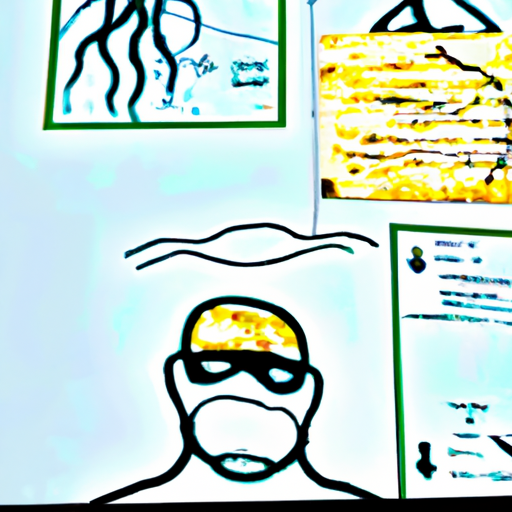
-
Table of Contents
The Role of Illustration in Environmental Activism

Environmental activism is a crucial movement that aims to protect and preserve our planet’s natural resources and ecosystems. It encompasses a wide range of activities, from grassroots campaigns to international policy advocacy. In recent years, illustration has emerged as a powerful tool in the arsenal of environmental activists. Through its ability to communicate complex ideas and evoke emotions, illustration plays a vital role in raising awareness, inspiring action, and driving change. This article explores the significance of illustration in environmental activism and highlights its various applications and impact.
1. Visual Storytelling: Communicating Complex Ideas
Illustration has a unique ability to simplify complex concepts and make them accessible to a broader audience. Environmental issues, such as climate change or deforestation, can be challenging to comprehend fully. However, through the use of visual storytelling, illustrators can break down these complex ideas into digestible and engaging narratives.
For example, the graphic novel “The Water Will Come” by Jeff Goodell uses illustrations to depict the potential consequences of rising sea levels. By combining compelling visuals with informative text, the book effectively communicates the urgency of addressing climate change and its impact on coastal communities.
Furthermore, illustrations can bridge language barriers and reach diverse audiences. They have the power to transcend cultural and linguistic boundaries, making them an effective tool for global environmental campaigns. The iconic “Earthrise” photograph taken by the Apollo 8 astronauts in 1968, for instance, became a symbol of the environmental movement worldwide, transcending national borders and inspiring action.
2. Eliciting Emotional Responses: Inspiring Action
Illustration has a profound impact on our emotions. It can evoke empathy, compassion, and a sense of urgency, which are essential for inspiring action. By visually representing the consequences of environmental degradation, illustrators can create an emotional connection between the viewer and the issue at hand.
One powerful example is the “Save Our Species” campaign by the International Union for Conservation of Nature (IUCN). The campaign features illustrations of endangered animals made entirely of the flora and fauna they depend on. These striking visuals not only raise awareness about the threats faced by these species but also elicit a strong emotional response, motivating individuals to take action and support conservation efforts.
Moreover, illustrations can humanize environmental issues by depicting the impact on communities and individuals. The “Faces of Climate Change” project by artist Joe Caslin, for instance, portrays the stories of people affected by climate change through large-scale murals. By putting a face to the issue, these illustrations create a personal connection and inspire empathy, encouraging viewers to engage with the problem and seek solutions.
3. Amplifying Messages: Reaching a Wider Audience
Illustration has the power to capture attention and engage viewers in a way that text alone often cannot. In the age of social media and information overload, visual content is more likely to be shared and go viral, reaching a wider audience and amplifying the message of environmental activism.
For example, the “Strawless Ocean” campaign by the Lonely Whale Foundation utilized a simple illustration of a turtle with a plastic straw stuck in its nose. This powerful image quickly gained traction on social media, sparking a global movement to reduce single-use plastic straws. The illustration served as a visual representation of the harmful impact of plastic pollution on marine life, effectively raising awareness and inspiring individuals, businesses, and governments to take action.
Additionally, illustrations can be used to create memorable symbols and icons associated with environmental causes. The recycling symbol, for instance, is a universally recognized illustration that represents the importance of waste management and recycling. Such symbols serve as visual shorthand, instantly conveying a message and fostering a sense of collective responsibility.
4. Case Studies: Illustration in Action
Several case studies demonstrate the power of illustration in driving environmental activism. One notable example is the work of artist and activist Shepard Fairey. Fairey’s iconic “Hope” poster, featuring Barack Obama, became a symbol of the 2008 presidential campaign. Fairey later adapted the poster to raise awareness about climate change, creating the “Earth Crisis” series. These illustrations were widely shared on social media and used in protests, effectively mobilizing individuals and organizations to take action on climate change.
Another case study is the “Drawdown” project, which aims to identify and promote the most effective solutions to reverse global warming. The project utilizes illustrations to visualize the impact of each solution and make the information more accessible to a broad audience. By combining scientific data with compelling visuals, the project inspires individuals, businesses, and policymakers to implement these solutions and contribute to a more sustainable future.
5. Conclusion
Illustration plays a vital role in environmental activism by communicating complex ideas, eliciting emotional responses, amplifying messages, and reaching a wider audience. Through visual storytelling, illustrations simplify complex concepts and make them accessible to diverse audiences. By evoking emotions and creating a personal connection, illustrations inspire action and motivate individuals to support environmental causes. Moreover, illustrations have the power to capture attention and go viral, amplifying the message of environmental activism in the digital age. As the world faces pressing environmental challenges, the role of illustration in raising awareness, driving change, and shaping a sustainable future has never been more critical.
